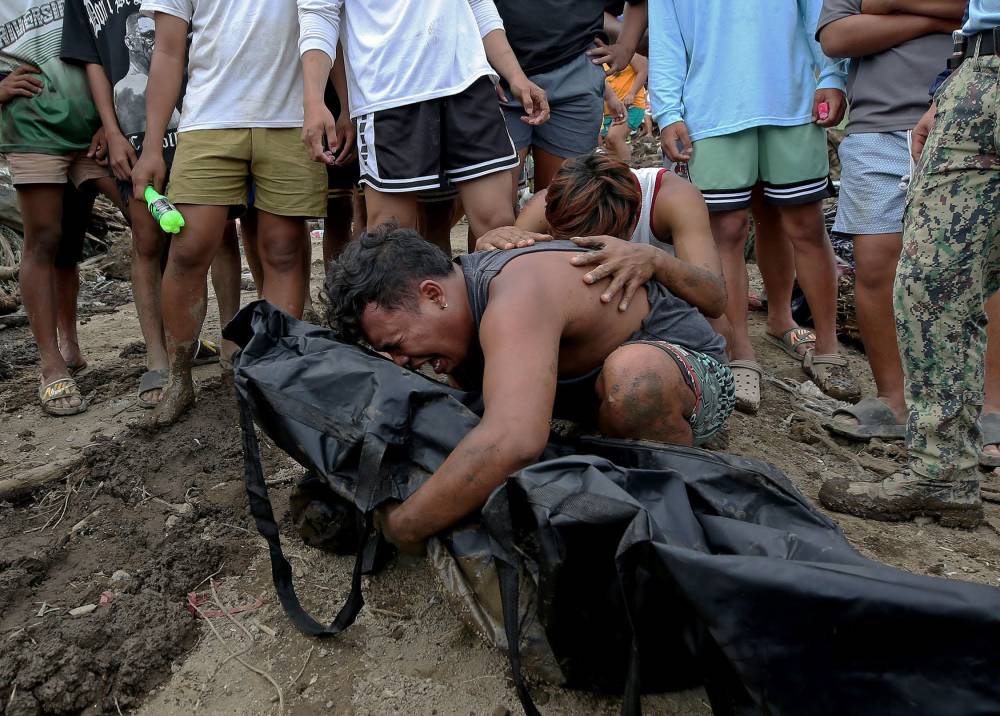Climate change intensified rapid succession of PH storms–study

Human-induced climate change fueled a rare string of back-to-back typhoons that battered the Philippines this year and boosted the chances of powerful storms making landfall, a new study said on Thursday.
Five typhoons and a tropical storm hit the Philippines in a 23-day period across October and November, killing more than 170 people and causing at least $235 million in damage, according to local authorities.
About 20 big storms and typhoons hit the Southeast Asian nation or its surrounding waters each year, killing scores of people. However, it is rare for multiple major weather events to hit over such a short period.
To assess the role of climate change in the string of storms, scientists from the World Weather Attribution (WWA) network used modeling to compare weather patterns in today’s world against a hypothetical world without human-induced warming.
“Our results show that conditions conducive to the development of consecutive typhoons in this region have been enhanced by global warming,” they said in a study published late Thursday. “The chance of multiple major typhoons making landfall will continue to increase as long as we continue to burn fossil fuels.”
The research, which uses a peer-reviewed methodology, found climate change made the conditions that formed and fueled the typhoons twice as likely. Globally, the number of tropical cyclones is not increasing significantly.
However, warmer seas are helping fuel an increasing number of strong storms and a warmer atmosphere holds more moisture, which results in storms that drop more rain.
Category 3-5 landfalls
The study found that the warmer climate makes it 25 percent more likely that at least three Category 3-5 typhoons will make landfall in the Philippines in a year.
The unprecedented formation of four typhoons around the Philippines last month was made 70 percent more likely as a result of global temperature rise of 1.3 degrees Celsius (2.3 degrees Fahrenheit), it added.
“Such consecutive extreme events make it difficult for populations to recover,” the scientists warned.
And the world’s current warming trajectory puts the Philippines on course for even worse effects, the study said.
Severe Tropical Storm “Kristine” (international name: Trami), considered by Philippines’ civil defense officials as the deadliest storm to hit the country this year, submerged hundreds of villages in the northern Philippines and displaced more than half a million residents.
Supertyphoon Man-yi (“Pepito), which brought havoc to Catanduanes province last month, also caused a province-wide power outage that authorities are still struggling to rectify.
“While it is unusual to see so many typhoons hit the Philippines in less than a month, the conditions that gave rise to these storms are increasing as the climate warms,” said Ben Clarke, a weather researcher at Imperial College London’s Centre for Environmental Policy, one of the report’s authors.
The study warned that the repeated storms created a “perpetual state of insecurity,” with about 13 million people affected by at least three of the extreme weather systems.
Though scientists are cautious when it comes to attributing individual weather events to climate change, the consensus is that warmer oceans are intensifying rainfall and wind speeds across the globe.
“The storms were more likely to develop more strongly and reach the Philippines at a higher intensity than they otherwise would have,” Clarke said.
Projected to increase
If temperatures rise to 2.6 Celsius above preindustrial levels, those same storm conditions would be 40 percent more likely compared to now, he added.
An analysis published last month by US weather researchers Climate Central said that hurricanes had intensified significantly as a result of record-breaking ocean warming, with wind speeds up by 29 kilometers per hour (18 miles per hour).
The report also noted that the potential intensity of typhoons as observed this year “has been made more likely by a factor of 1.7, or what amounts to an increase of 7.2 kph in intensity.”
“These changes are projected to increase with further warming,” the report said, noting that typhoons would further increase by an additional 7.2 kph in intensity should the world become warmer by 2.6 C.
The increase of 2.6 C “reflects projected conditions by the end of the century given currently implemented policies,” read the report.
The five typhoons and one tropical storm that hit the Philippines from October to November was “extremely unusual” that the WWA found the quick succession difficult to study “because it is so rare.”
Needed investment
The Philippines needs major investment to tackle the challenges it faces from climate change, the scientists said.
“The Asian Development Bank recently estimated that $102 billion to $431 billion per year needs to be invested in Asian and Pacific countries to help them cope with climate change. However, in 2022, just $34 billion was invested for adaptation in the region,” the group added.
“But of course funding adaptation isn’t enough to protect the Philippines from climate change,” said Friederike Otto, the scientist who leads WWA. “Unless the world stops burning fossil fuels, typhoons will continue to intensify.”
The study was conducted by 12 researchers which included scientists from the Philippines, the Netherlands, Sweden and the United Kingdom.
AFP is one of the world's three major news agencies, and the only European one. Its mission is to provide rapid, comprehensive, impartial and verified coverage of the news and issues that shape our daily lives.
Reuters, the news and media division of Thomson Reuters, is the world’s largest multimedia news provider, reaching billions of people worldwide every day. Reuters provides business, financial, national and international news to professionals via desktop terminals, the world's media organizations, industry events and directly to consumers.

















